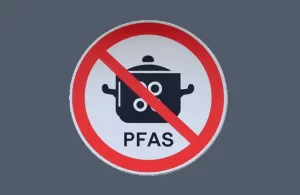Proton therapy with long-term cost-effectiveness for cancer treatment
- “Miracle Weight-loss Drug” Semaglutide Is Not Always Effective
- Study shows regular seafood consumption may increase risk of exposure to PFAS
- A Persistent Crisis: The Looming Specter of Drug Shortages in United States
- Rabies: The fatality rate nearly 100% once symptoms appear
- Human Brain Continues to Grow: Study Shows Increase in Size and Complexity
- CRISPR Genome Editing: From Molecular Principles to Therapeutic Applications
Proton therapy with long-term cost-effectiveness for cancer treatment
- Red Yeast Rice Scare Grips Japan: Over 114 Hospitalized and 5 Deaths
- Long COVID Brain Fog: Blood-Brain Barrier Damage and Persistent Inflammation
- FDA has mandated a top-level black box warning for all marketed CAR-T therapies
- Can people with high blood pressure eat peanuts?
- What is the difference between dopamine and dobutamine?
- How long can the patient live after heart stent surgery?
Proton therapy with long-term cost-effectiveness for cancer treatment
Subvert cognition! Although proton therapy is expensive, it is more “economical” than ordinary radiotherapy in the long-term cost-effectiveness!
In the eyes of many people, the characteristic of radiotherapy can be described as “one rod overturns a boat”. Even normal tissues may be ruthlessly eliminated by radiotherapy.
Especially for tumors surrounding important organs such as the heart, brain, lungs, and gastrointestinal tract, once the radiation dose received by these organs reaches a certain value, some radiation side effects will occur, some are reversible in the short term, and some are irreversible in the long term.
The most common radiation dermatitis, myocardial ischemia, radiation pneumonia, gastrointestinal reactions, impaired cognitive function, vision or hearing impairment, etc., can affect the quality of life, and the more severe ones will affect the therapeutic effect.
So is there an ideal radiotherapy that can kill the tumor without affecting the normal tissues around the tumor?
Proton therapy has always been called the “jewel in the crown” of tumor radiotherapy, and its effect is similar to “directional blasting”.
Compared with ordinary photon therapy that causes certain damage during the penetration process, proton therapy can accurately project directional missiles to the designated tumor site.
The purpose of killing tumors. Especially for malignant tumors that grow in important organs such as eyes, liver and kidney, brain, nasopharynx, chest wall, or nearby important organs, the advantages of proton therapy are more obvious.

The picture source is the proton therapy instrument of Pennsylvania Medicine
Study finds that proton has reduced the number of unplanned hospitalizations by two-thirds
In addition to the obvious advantages of proton therapy for the treatment of the above-mentioned major tumors, on the other hand, the high cost of proton therapy has discouraged many patients and their families.
Indeed, compared with ordinary radiotherapy, the cost of proton therapy is indeed much higher. The main reason is the construction cost, as well as the high cost of central infrastructure and subsequent maintenance.
In fact, the high cost of proton therapy may only be a superficial phenomenon. The costs of proton therapy seems to be expensive, and from the perspective of long-term health economics, it is indeed a “money-saving” treatment. So how to save money for more “COST-EFFICIENT”?
Breast cancer: 15 years of large-scale research confirms that high-end tumor proton therapy is even more “economical” than ordinary radiotherapy!
For left breast cancer, proton therapy is a good indication. Because proton therapy can reduce the dose to the heart and reduce the risk of cardiovascular disease.
01. Examples 1
A 15-year follow-up study of breast cancer patients undergoing radiotherapy in the United States found that the initial cost of breast cancer patients who received proton therapy was three times that of the photon therapy group, but the total medical expenses for 15 years were significantly lower than that of the photon therapy group .
Because breast cancer patients undergoing traditional photon radiotherapy after surgery, their heart and lungs will inevitably receive low-dose radiation, which will damage the cardiopulmonary function to a certain extent, while proton therapy has minimal damage to the heart and lungs. During the survival period, the number of visits to doctors due to cardiovascular problems or respiratory problems was significantly reduced. Therefore, the total medical expenses of the proton therapy group for 15 years were much lower than that of the conventional radiotherapy group, and the risk of patients dying from heart disease was also significantly reduced. Many commercial insurances in the United States eventually include proton therapy after breast cancer surgery into the insurance coverage.
02. Example 2
A study from the Karolinska Institute in Stockholm, Sweden, on whether the medical benefits of proton therapy are sufficient to prove that it has a higher treatment cost than traditional radiotherapy, mainly evaluated the cost-effectiveness of proton therapy in 55-year-old women with left breast cancer.
For these patients, the initial cost of radiotherapy for proton therapy is US$13,610, and the cost of full opal photon therapy is US$6051. Considering the average cost of heart disease (whole-breast photon therapy is $80,596 and proton therapy is $41,491), compared with full-breast photon therapy, proton therapy is beneficial to selecting suitable patients with left breast cancer at high risk of cardiotoxicity.
Medulloblastoma: Proton therapy reduces the total cost by 2.6 times and is the best treatment option for brain tumors
A Swedish study evaluated the cost-effectiveness of proton therapy and photon therapy for medulloblastoma using a Markov model.
Compared with photon therapy, the initial cost of proton therapy is 2.4 times higher (US$12,364 vs US$5129). However, the cost of adverse reactions of proton therapy and photon therapy was 5121 US dollars and 40,967 US dollars (proton therapy is nearly 8 times more advantageous than photon therapy), resulting in a total cost of proton therapy and photon therapy of 17,484 US dollars and 46,096 US dollars (proton therapy reduced 2.6 times). Among the children’s concentrated adverse reactions (hearing loss, lower IQ, low thyroid function, insufficient hormone secretion, osteoporosis, heart disease, and second primary tumors), lower IQ and insufficient hormone secretion contribute the most to cost savings , And it is the most important parameter in potency analysis.
These results show that if you choose the right children with medulloblastoma, proton radiation therapy is more cost-effective than photon therapy and can save costs. Therefore, proton therapy is considered the most cost-effective option for brain tumors.
Liver cancer: Compared with interventional therapy, proton therapy has a shorter course of treatment, shorter hospital stays, and lower hospital costs
At the 2018 PTCOG [International Particle (Proton) Therapy Collaborative Group] annual meeting, clinical researchers and participants shared: comparison of intervention, cost-benefit analysis of the cost of proton therapy for liver cancer, the results found that while ensuring the treatment effect, proton It is more cost-effective to treat liver cancer.
This study mainly compares the efficacy and cost of proton therapy for liver cancer compared with standard interventions for liver cancer (transarterial chemoembolization, TACE).
01. Proton therapy vs. interventional therapy: shorter duration of treatment
For patients with liver cancer treated with protons, 30 patients received only one course of treatment. In addition, because of the recurrence of the disease, 5 patients received 2 courses of treatment and 1 patient received 3 courses of treatment. The total number of courses of proton therapy was 43. indivual. Patients who used interventional therapy received a total of 69 courses of treatment.
02. Proton therapy vs. interventional therapy: shorter hospital stay
The study found that after one month of treatment, the total length of stay in proton therapy patients was 24 days; among the interventional patients, the length of stay was as high as 166 days.
03. Proton therapy vs. interventional therapy: less hospitalization costs
If it is simply more than the cost of a course of treatment, it seems that the cost of proton therapy is higher. However, because proton therapy requires fewer courses, the average cost per treatment course for proton therapy patients is 23,000 U.S. dollars, while the average cost per treatment course for interventional therapy patients is 26,000 U.S. dollars.
In addition, due to the shortened follow-up hospitalization time of proton therapy patients, the follow-up hospitalization cost of proton therapy patients is also less, about 1470 US dollars per patient, while the intervention group has a long hospital stay, and the average hospitalization cost per patient is 9038 US dollars.
Head and neck cancer: Proton therapy can reduce the risk of death by 24% and reduce side effects caused by head and neck irradiation
Clinical studies have confirmed that proton radiation can reduce the risk of death by 24% compared to superphoton radiation. The two most disturbing side effects of head and neck irradiation are acute mucositis and acute and chronic xerostomia. Radiation therapy focused on the salivary glands may cause temporary or permanent damage to them. Dry mouth can have a serious negative impact on the quality of life of patients, causing difficulty in tasting, chewing, swallowing, and speaking. It also increases the susceptibility to dental caries and tooth loss, and osteonecrosis is a secondary risk.
An important cost saving is to reduce the need for dentistry, because patients undergoing radiotherapy are usually referred to dentistry before treatment begins, and visits regularly during treatment. The estimated cost reduction is based on the hypothesis that the number of visits for head and neck patients is reduced to the end. In the remaining life cycle, the dental cost saved by head and neck patients is about 3261 euros.
Among the 39 indications that are currently suitable for proton therapy, the most mentioned are patients who are difficult to surgically remove, cannot be surgically removed, or cannot be completely removed by surgery. Usually these patients’ tumors are located in a special location, such as brain and spinal cord tumors, head and neck tumors, lung and mediastinal tumors, digestive system tumors, hepatobiliary pancreatic tumors, bone and soft tissue sarcoma, or the cancer patients are more special, such as pediatric tumors , Elderly cancer patients, etc. The advantages of proton therapy for these difficult and special indications are particularly obvious, and it can also bring a higher quality of life to patients.
Traditional radiotherapy has large side effects and it is difficult to guarantee the quality of life! Proton therapy is given priority to elderly and pediatric cancer patients!
Proton therapy is an anti-cancer weapon, not a “artifact”, it should be treated rationally
In recent years, humans have made many breakthroughs in the field of anti-tumor therapy. Individualized anti-tumor therapy requires the comprehensive use of multiple treatment methods such as surgery, radiotherapy, chemotherapy, molecular targeting, and immunotherapy.
As a kind of radiotherapy technology, proton therapy is currently impossible to replace traditional photon radiotherapy. However, for some special tumors, proton therapy has the incomparable advantages of traditional radiotherapy. It can produce solid tumors with a lethality similar to directed blasting, while minimizing damage to surrounding tissues.
Although the current treatment cost is relatively high, with the popularization of technology, the cost of proton therapy will gradually decrease and benefit the public.
In addition, experts should remind patients that in the era of precision medicine, cancer treatment should undoubtedly be more personalized and not limited to only one therapy or one technology.
Proton therapy cannot “cover all diseases”, but is one of the options for comprehensive cancer treatment.
The comprehensive treatment of patients with surgery, drug therapy, radiotherapy and other methods is the guarantee for patients to obtain a better prognosis.
references
https://www.tandfonline.com/doi/full/10.1080/02841860500341157
(source:internet, reference only)
Disclaimer of medicaltrend.org
Important Note: The information provided is for informational purposes only and should not be considered as medical advice.



